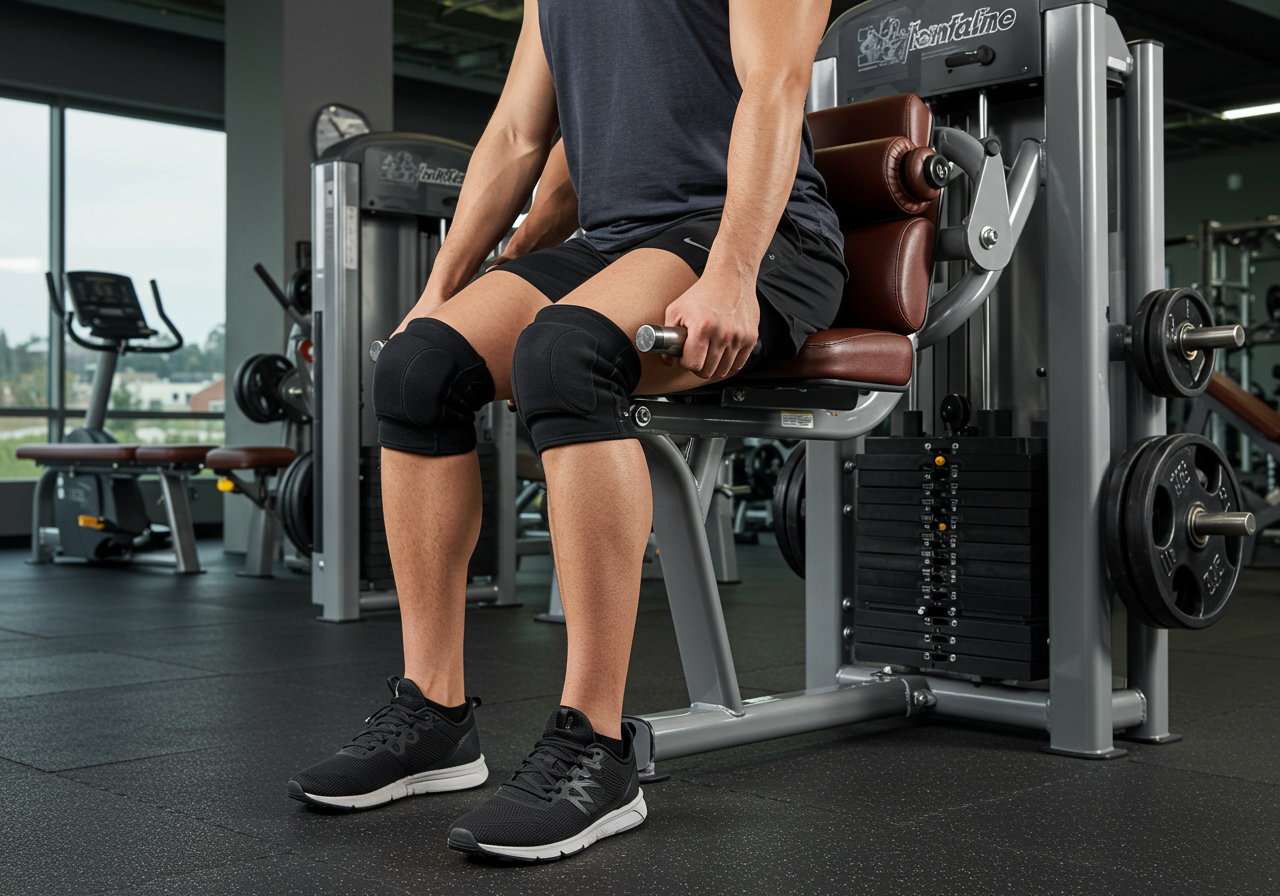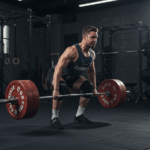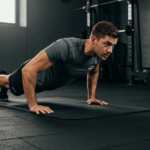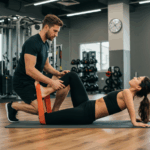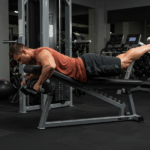Hip Integrity System: Why the Abductor–Adductor Machine Matters

Hip integrity drives strength and confidence
Strong hips control knee tracking and spinal stability. Your outer and inner thighs anchor that control. The thigh abductor-adductor machine isolates these muscles safely.
I program this machine as a cornerstone for beginners. It builds hip stability before heavy squats or running. It also helps advanced lifters fix knee cave and stride inefficiency.
Machine setup determines comfort and effectiveness. Set the seat height so knees align with the machine’s pivot. Keep the spine neutral and ribs stacked over the pelvis.
Range matters more than load early. Move through a pain-free arc. Pause one second at full contraction to teach control.
My own baseline started post-marathon. My knees caved during heavy squats. I used this machine twice weekly to re-center mechanics.
| Muscle | Primary Action | Machine Movement | Sport Benefit |
|---|---|---|---|
| Gluteus Medius/Minimus | Hip abduction, pelvic stability | Abductor (pads start together, push outward) | Prevents knee valgus in squats and runs |
| Adductor Magnus/Longus | Hip adduction, hip extension assist | Adductor (pads start apart, squeeze inward) | Improves change of direction and stride power |
This system links to full-body training. Stable hips let you squat deeper, walk longer, and sprint safer.
Weekly Blueprint: Complete Lower-Body Integration With the Hip Machine

Structure your week for strength and stability
We anchor the machine inside a complete lower-body plan. We include warm-ups, main lifts, and finishers.
Warm-ups raise tissue temperature and activate hips. I use five minutes cycling at Zone 2. I keep heart rate at 60–70% max. I confirm on my Garmin watch.
| Day | Focus | Main Lifts | Abductor-Adductor Machine | Finisher |
|---|---|---|---|---|
| Day 1 | Squat Strength | Back Squat 4×5, Romanian Deadlift 3×8 | Abductor 3×12, Adductor 3×12, 90s rest | Bike 6 min Zone 3 intervals: 30s on/60s off |
| Day 2 | Lunge & Balance | Reverse Lunge 3×10/side, Step-up 3×10 | Abductor 4×10 (slow), Adductor 2×15 (light) | Side Plank 2x30s/side, Farmer Carry 2x40m |
| Day 3 | Posterior Chain | Trap Bar Deadlift 5×3, Hip Thrust 3×8 | Adductor 4×8 (heavy), Abductor 2×15 (pump) | Treadmill Walk 10 min Zone 2 |
I coach controlled tempo and full contact with pads. I cue tall posture and feet neutral. I avoid bouncing at end ranges.
| Level | Sets x Reps | Load Target | Rest | Tempo |
|---|---|---|---|---|
| Beginner | 3×12–15 each | RPE 6–7 | 60–90s | 2-1-2 |
| Intermediate | 4×8–12 each | RPE 7–8 | 90s | 2-1-2 |
| Advanced | 5×6–10 each | RPE 8–9 | 120s | 3-1-2 |
This blueprint supports total body progress. Your knees track better and your lifts feel smoother.
Progression Roadmap: Weeks 1–12 With Real Metrics

Progress steadily with measurable steps
We scale volume and intensity in simple phases. We confirm progress with consistent metrics.
| Phase | Weeks | Goal | Machine Prescription |
|---|---|---|---|
| Foundation | 1–4 | Groove form and range | 3×12–15 each, RPE 6–7 |
| Strength | 5–8 | Increase load safely | 4×8–10 each, RPE 7–8 |
| Power-Endurance | 9–12 | Resilience under fatigue | 5×10 each, 60s rest, last set AMRAP |
My typical session lasts 45–60 minutes. My Garmin logs warm-up at 110–125 bpm. Strength sets push me into 130–140 bpm.
I track loads in a simple Google Sheet. I also log nutrition in MyFitnessPal (myfitnesspal.com). I sync heart rate on Garmin Connect (garmin.com).
| Week | Abductor Load | Adductor Load | RPE | Notes |
|---|---|---|---|---|
| 1 | 50 lb x 3×15 | 60 lb x 3×15 | 6 | Learning positions |
| 4 | 65 lb x 3×12 | 80 lb x 3×12 | 7 | Full range, no pinch |
| 8 | 85 lb x 4×10 | 105 lb x 4×10 | 8 | Knees track better |
| 12 | 100 lb x 5×10 | 120 lb x 5×10 | 8–9 | Last set AMRAP |
We progress when range and posture hold steady. We hold load when posture breaks or pain appears.
Recovery, Mobility, Nutrition, and Fixing Plateaus

Recover well to grow stronger
Recovery cements strength gains and prevents setbacks. Mobility work keeps hips moving smoothly.
Nutrition drives adaptation. I keep calories at bodyweight x 14 for recomposition. I set protein at 1.8–2.2 g/kg daily.
| Goal | Calories | Protein | Carbs | Fat |
|---|---|---|---|---|
| Fat Loss | BW x 11–12 | 2.0–2.2 g/kg | 2–4 g/kg | 0.7–1.0 g/kg |
| Maintenance | BW x 14 | 1.8–2.0 g/kg | 3–5 g/kg | 0.7–1.0 g/kg |
I log food in MyFitnessPal. I aim for 7.5–9 hours of sleep. I avoid screens late to improve sleep quality.
Plateaus happen in week 6–8. I reduce range slightly and push controlled load. I also add isometric holds at end range for eight seconds.
Cardio supports recovery and fat loss. In my clients, short HIIT blocks outperform steady-state for fat loss. We use 6x30s hard bike sprints with 60s easy. We keep strength volume steady.
| Issue | Fix | Adjustment |
|---|---|---|
| Knee cave in squats | Add Abductor 1–2 extra sets | Light band cue around knees |
| Groin tightness | Shorten range 10–15% | Add 90/90 breathing drills |
| Motivation dips | Switch to pyramid sets | Train with music and timers |
These recovery habits sustain gains. Your hips stay strong and pain-free for the long run.
Client Stories, Data, and What Actually Worked

Real-world results prove the method
I test every protocol before I coach it. I also track client results weekly.
| Subject | Time | Abductor Strength | Adductor Strength | Transfer Effect |
|---|---|---|---|---|
| Me | 8 weeks | 5RM: 95 lb → 125 lb (+32%) | 5RM: 110 lb → 145 lb (+32%) | Back squat +15 lb, steadier knees |
| Client A | 6 weeks | 3×12 at 55 lb → 75 lb | 3×12 at 65 lb → 90 lb | Pain-free lunges, faster hikes |
| Client B | 10 weeks | 4×10 at 70 lb → 100 lb | 4×10 at 80 lb → 115 lb | Deadlift lockout stronger, fewer back aches |
Conditioning improved indirectly. My VO2 max climbed ~5% on Garmin. I paired Zone 2 with short HIIT blocks.
HIIT beat steady-state for fat loss in clients. It preserved leg strength better. We limited HIIT to two brief sessions weekly.
What failed first? I once chased heavy loads too soon. My adductors tightened and reduced squat depth. We fixed it with tempo work and lighter sets.
I recommend logging sessions. Use Garmin for heart rate and MyFitnessPal for nutrition. This clarifies what changes actually help.
Your Next 30 Days and Long-Term Playbook

Plan the next month for long-term result interpretation
A short calendar keeps you consistent. Daily checks maintain momentum and reduce decision fatigue.
| Week | Focus | Targets | Checkpoints |
|---|---|---|---|
| 1 | Technique | 3×12–15 light | No pinching, full range |
| 2 | Load | +2.5–5% if clean | RPE 7, steady tempo |
| 3 | Endurance | Add one AMRAP set | No form breakdown |
| 4 | Consolidate | Hold load, improve range | Reduced soreness |
Use these metrics to judge success. Increase loads, expand pain-free range, and keep knees tracking.
Maintain balance between abductors and adductors. Keep total weekly sets equal or close. Alternate which goes first each session.
I share wrap-ups with clients on Fridays. We review logs and adjust loads by 2.5–5%. We also schedule deloads after three hard weeks.
Two trusted tools help adherence. Garmin tracks heart rate and steps. MyFitnessPal tracks calories and protein.
This playbook protects your progress. Your hips get stronger and your whole body benefits.
